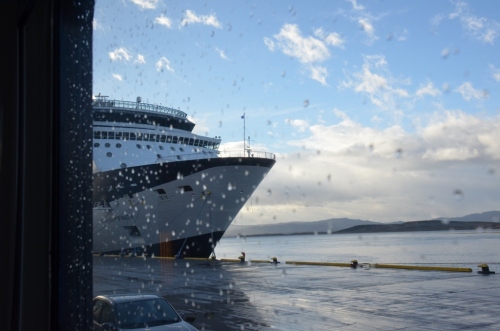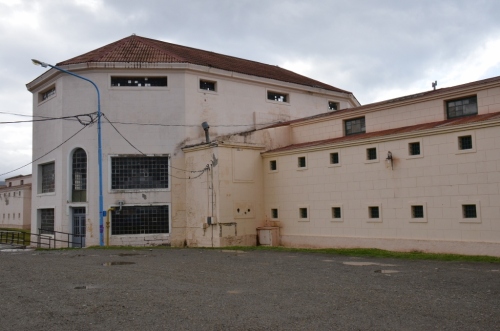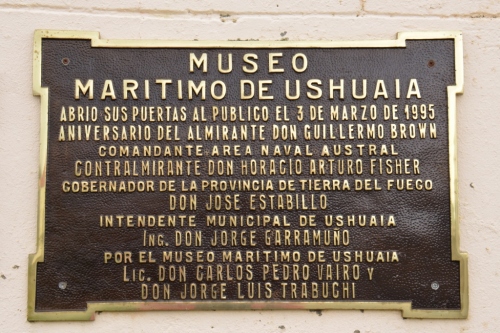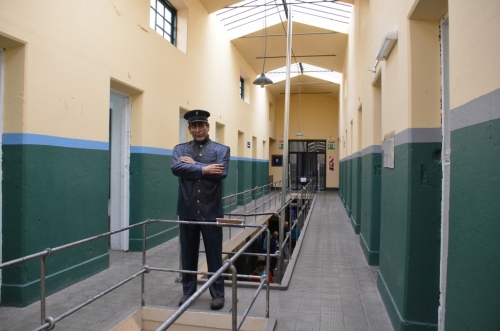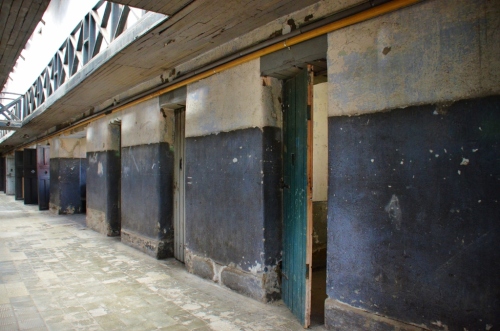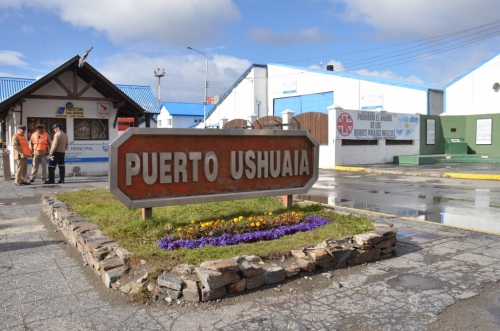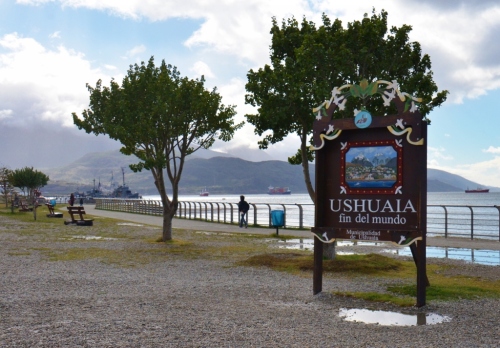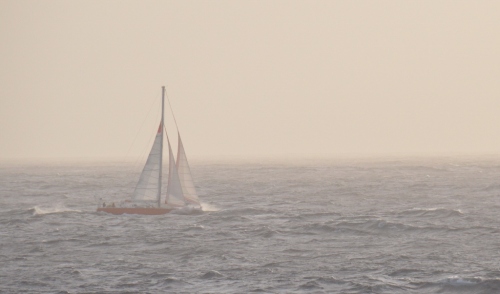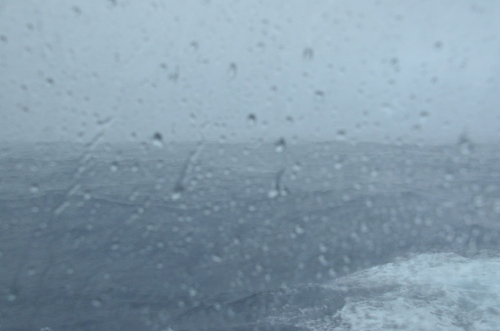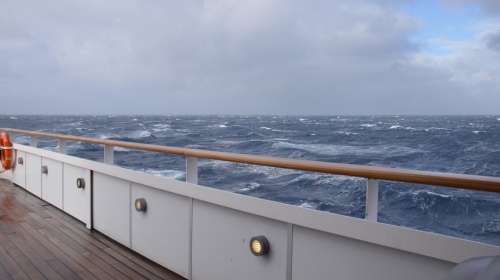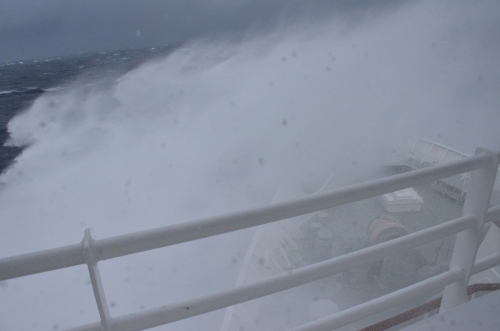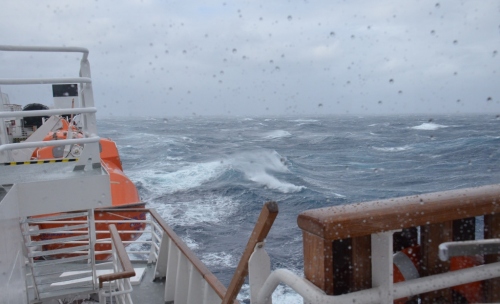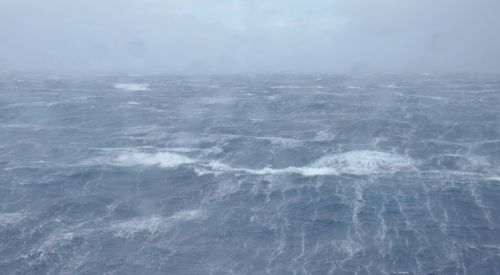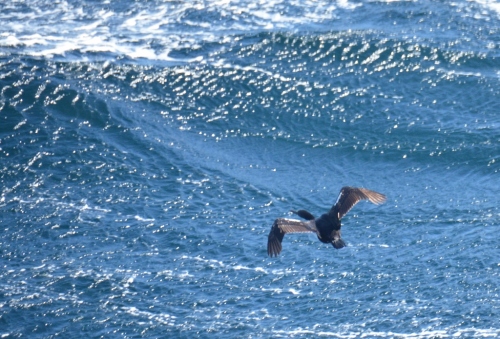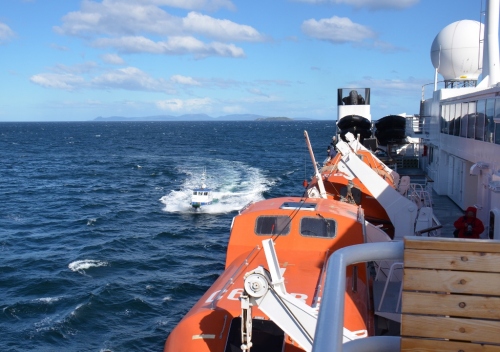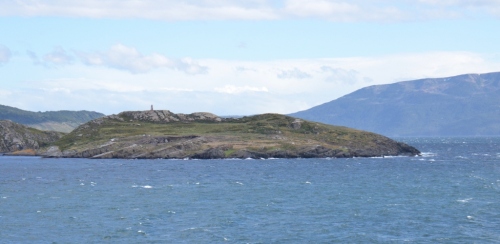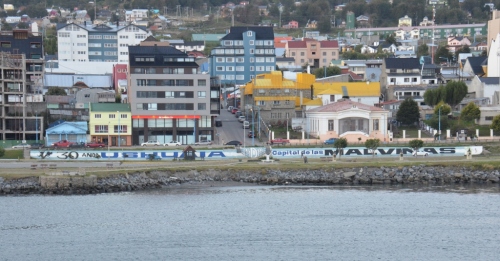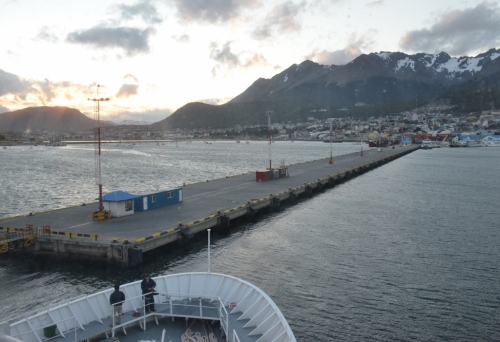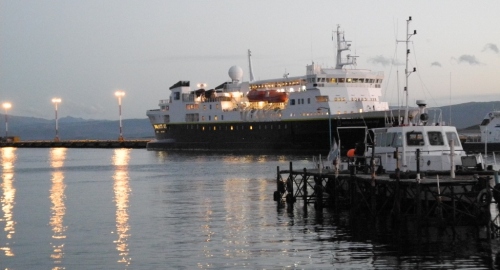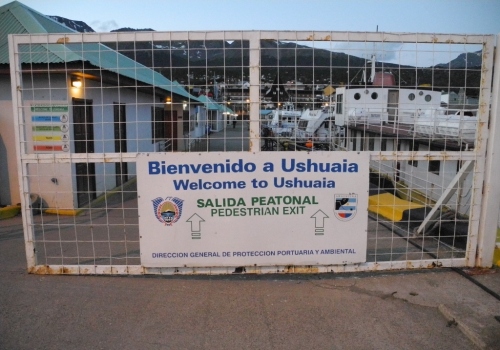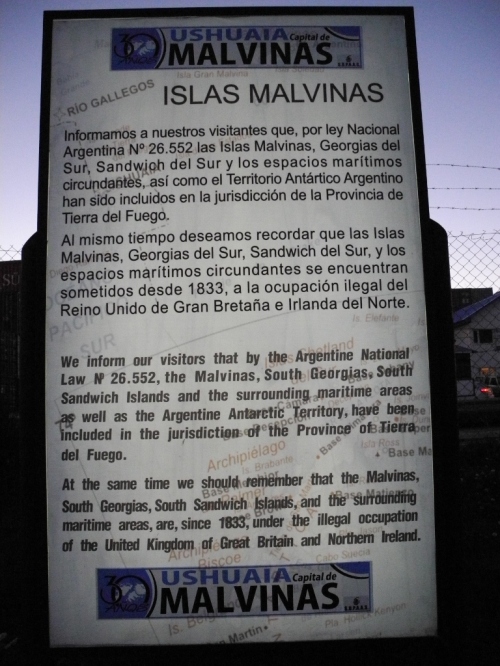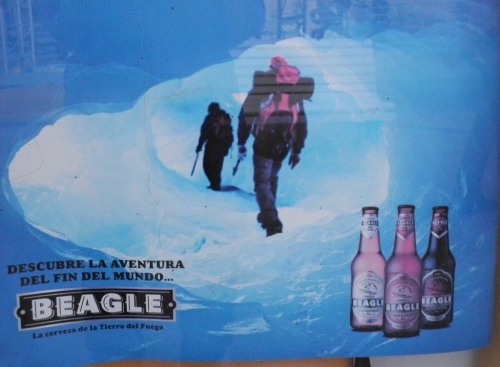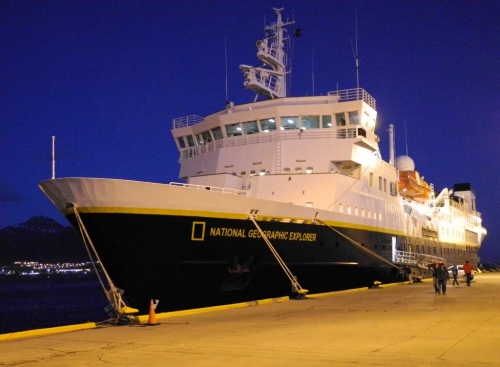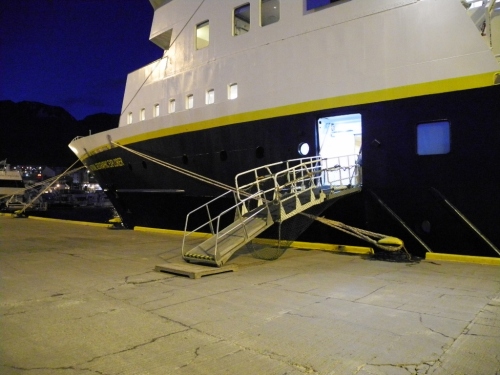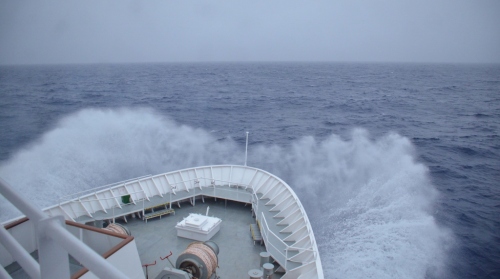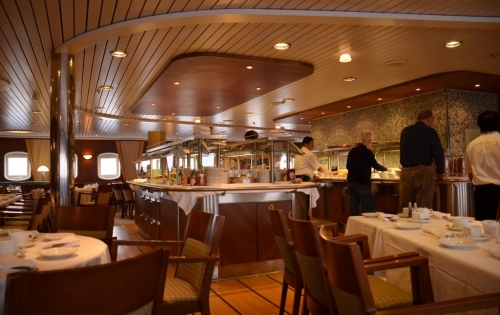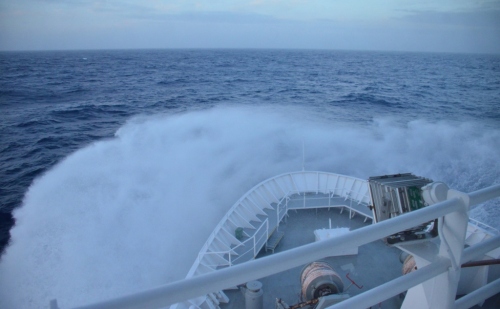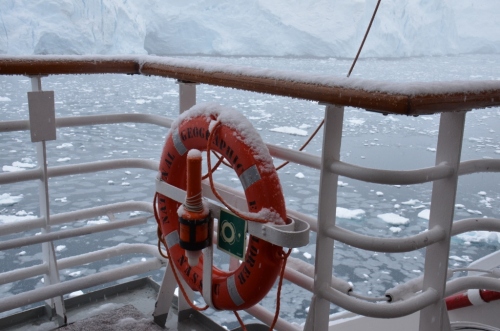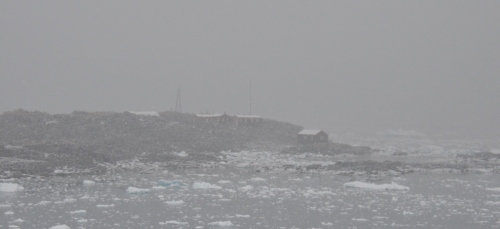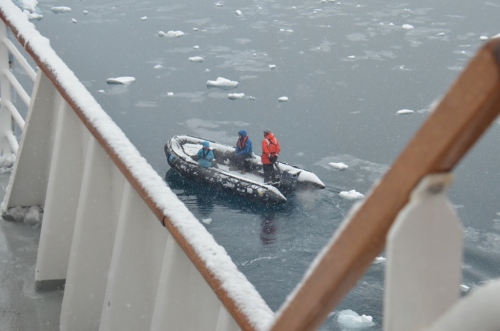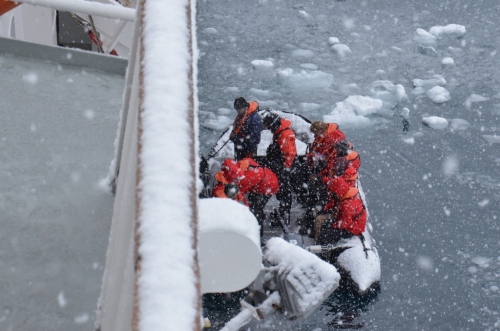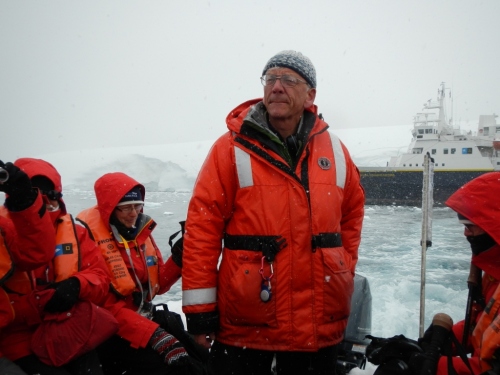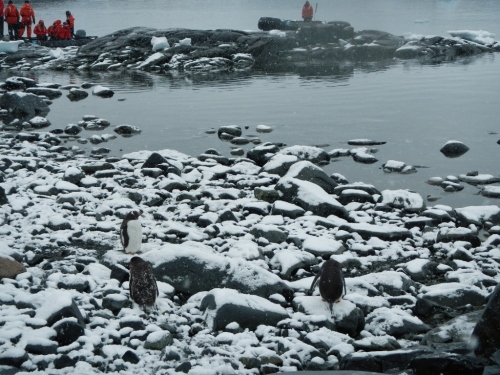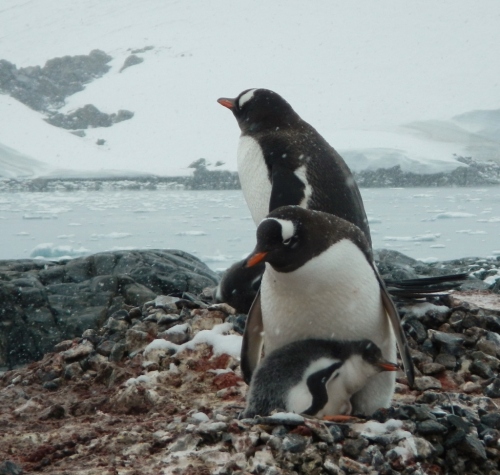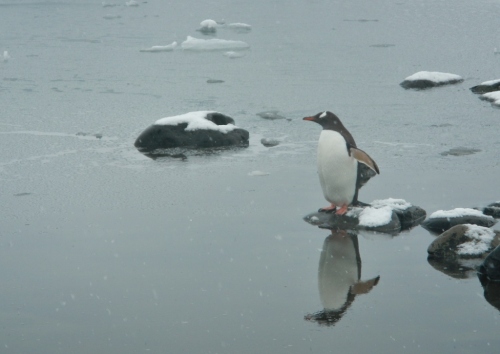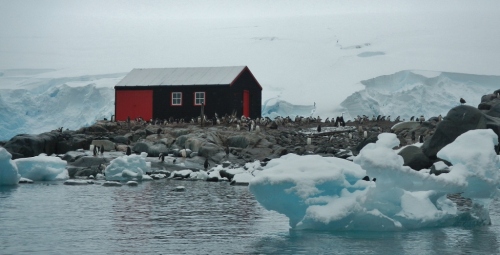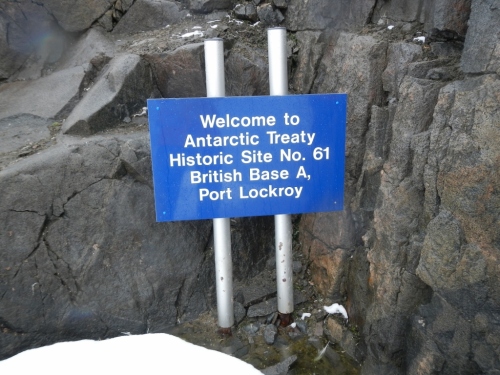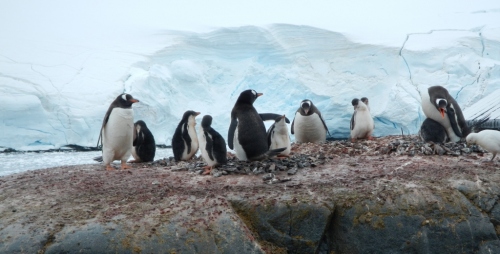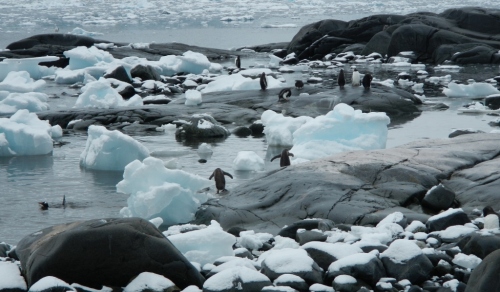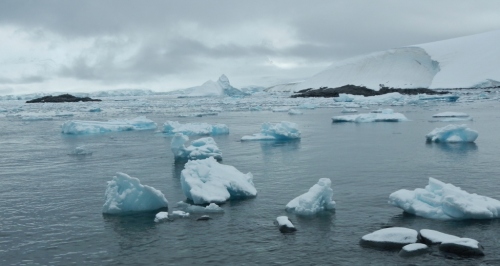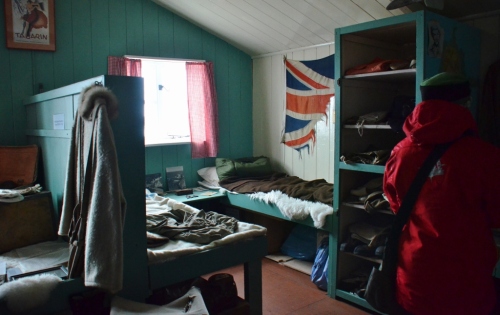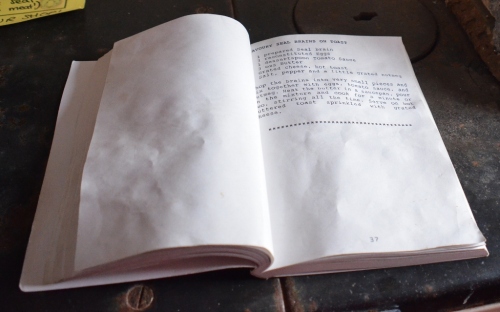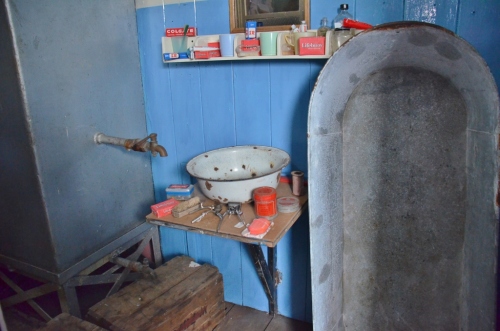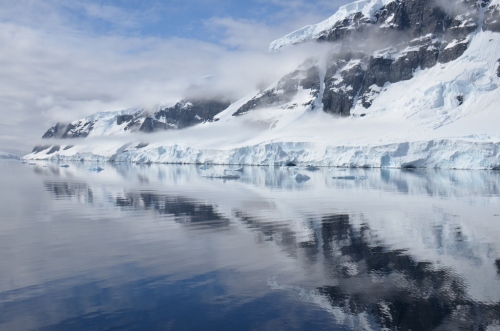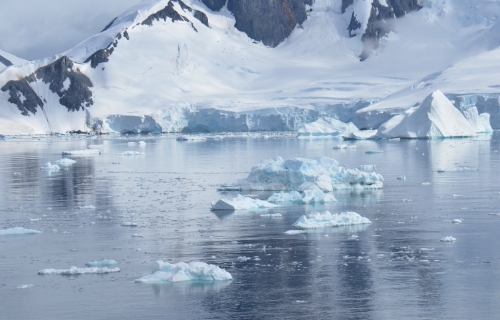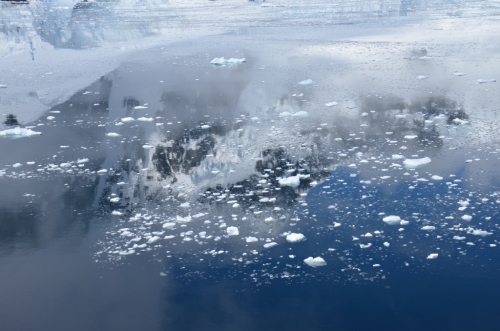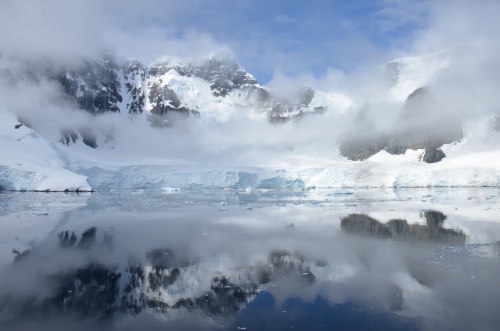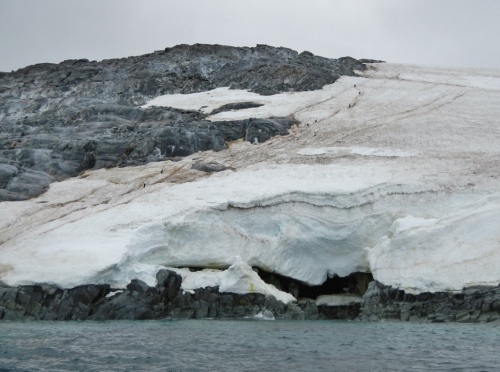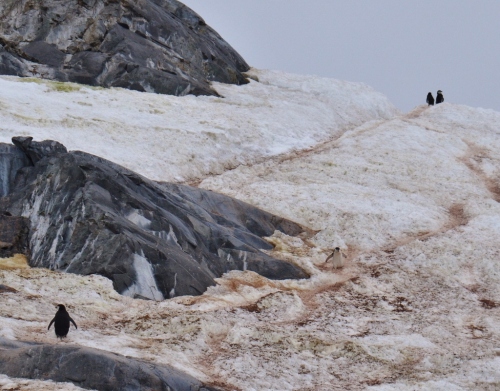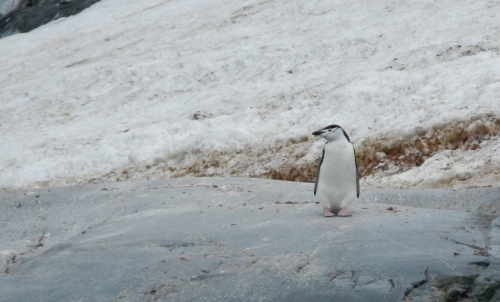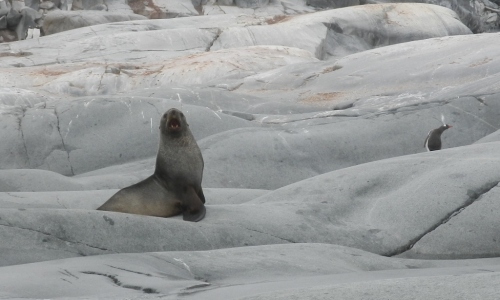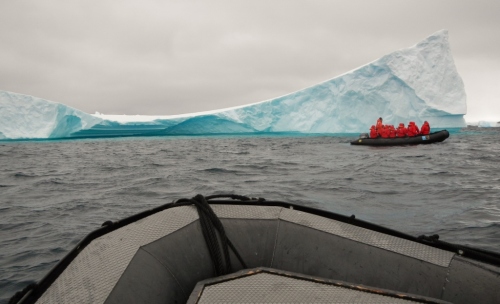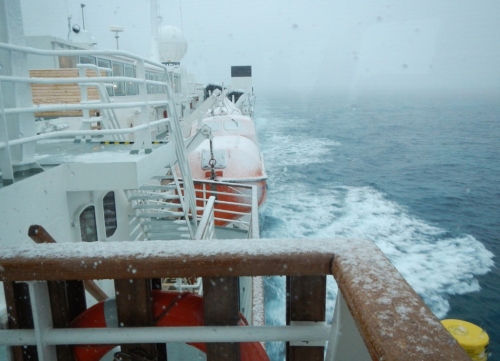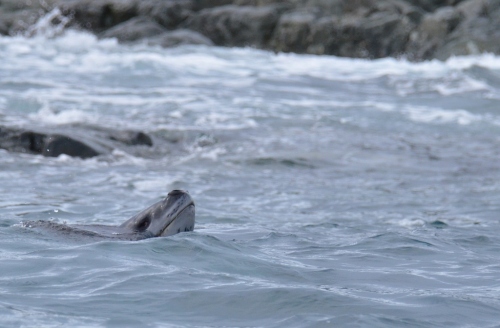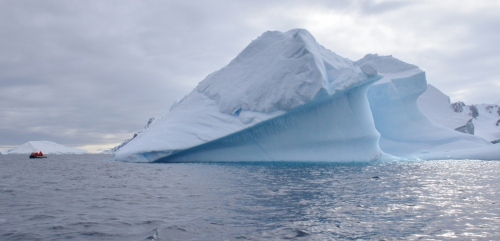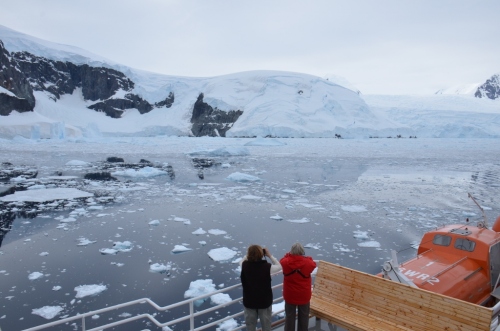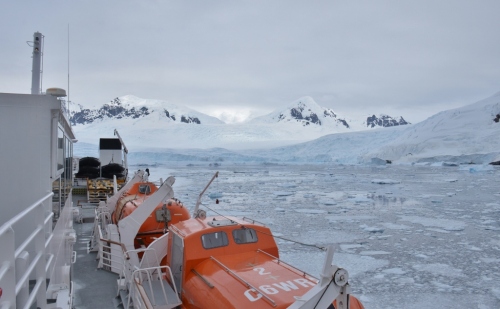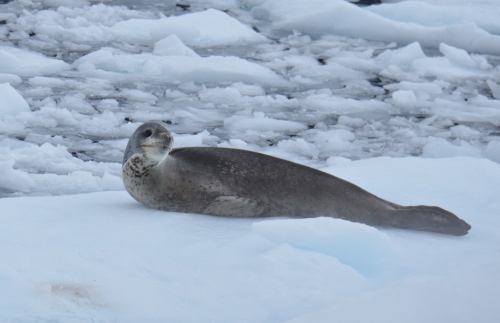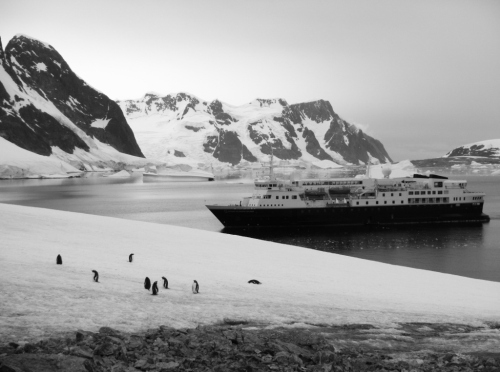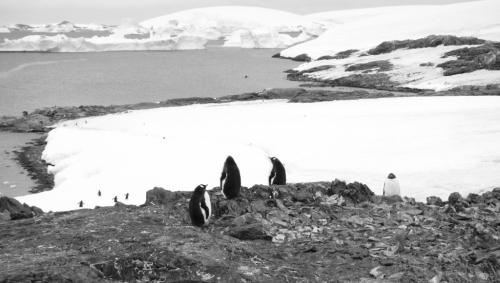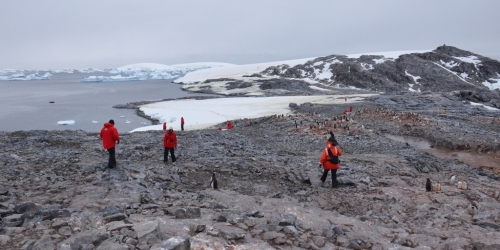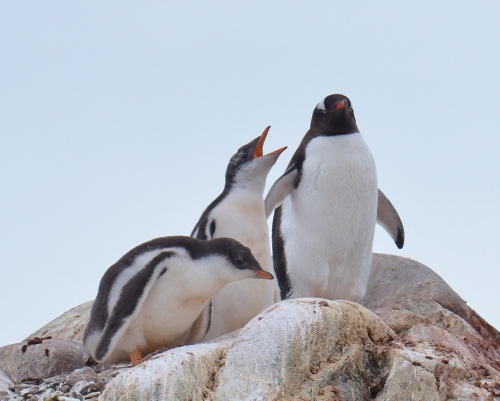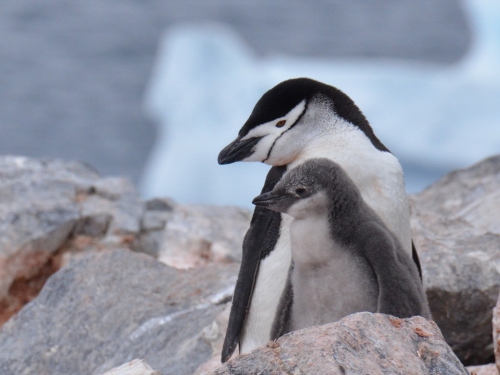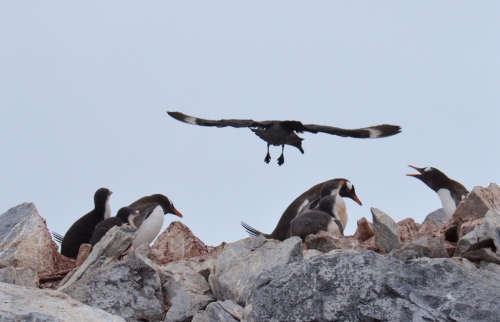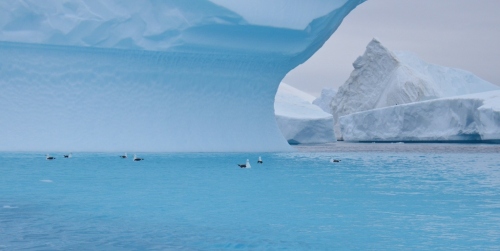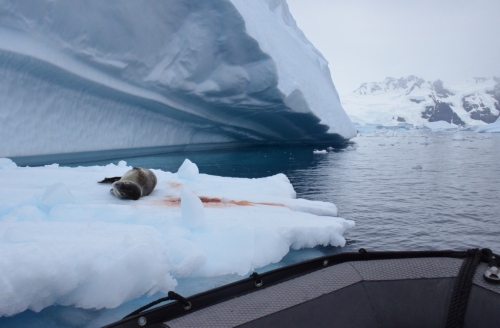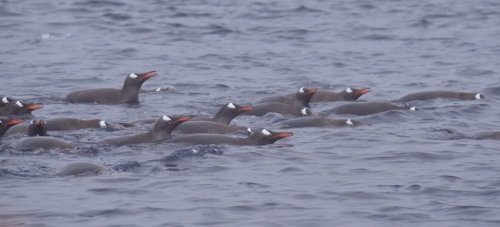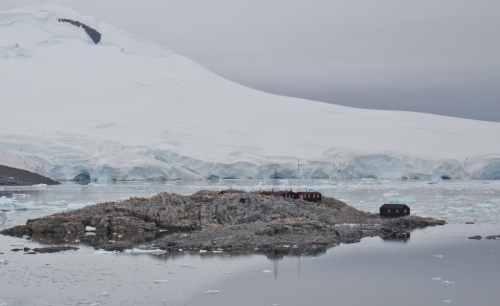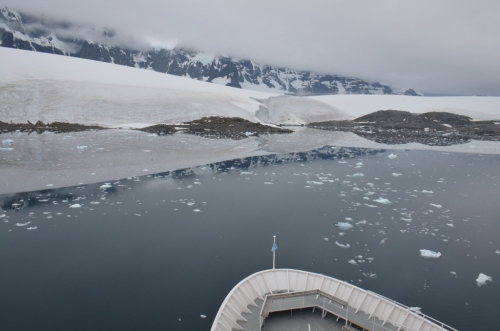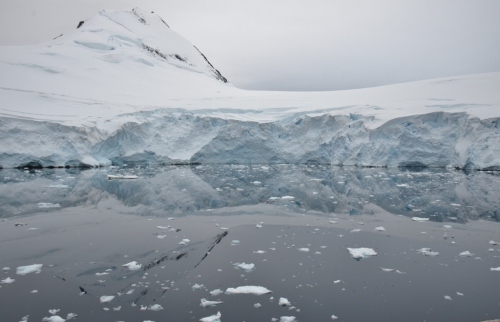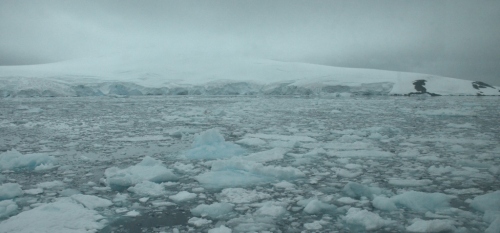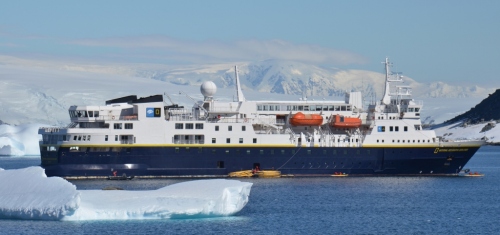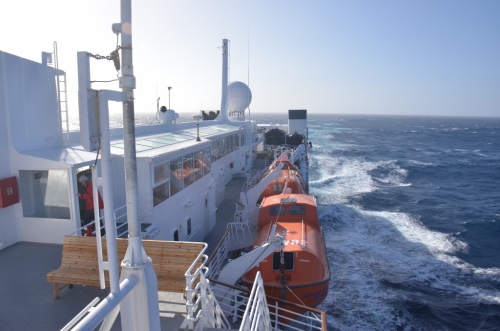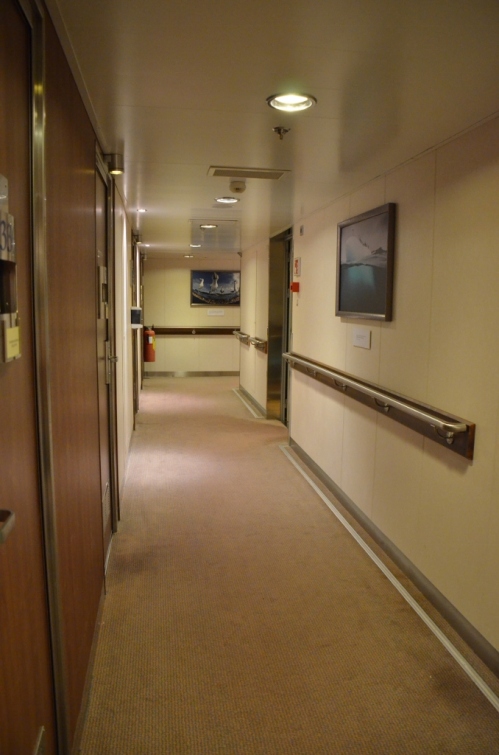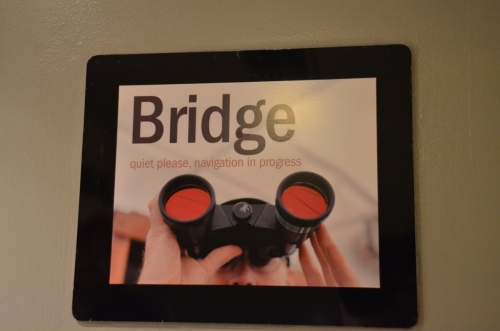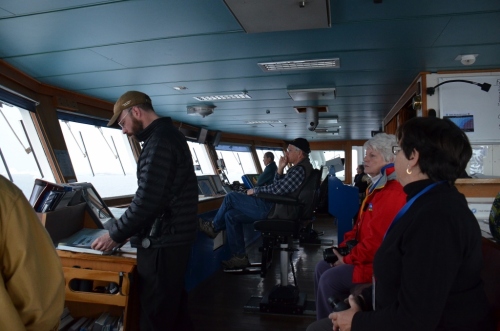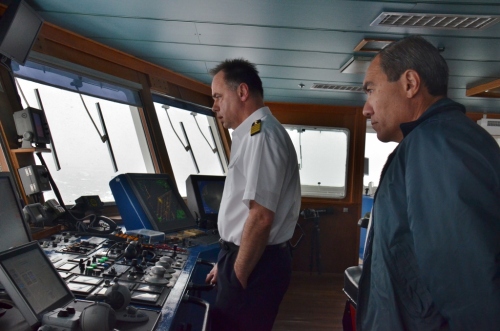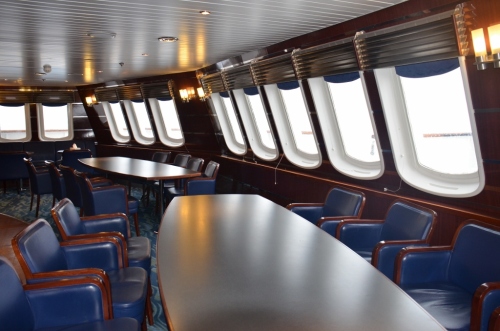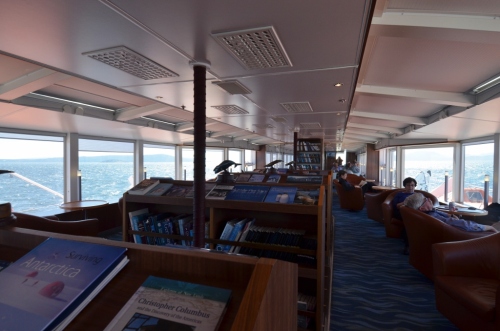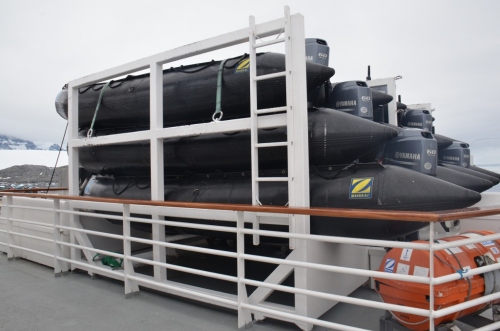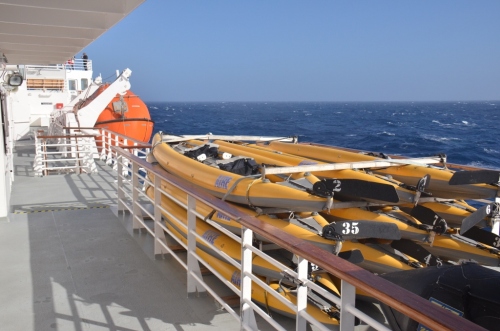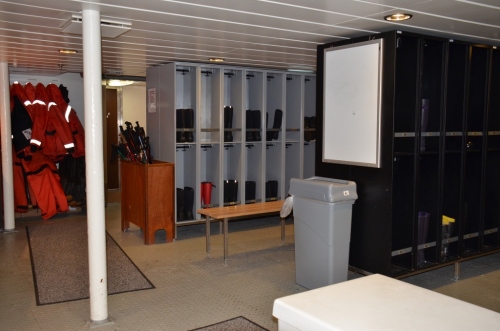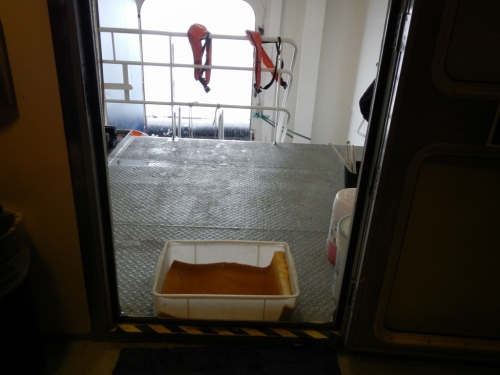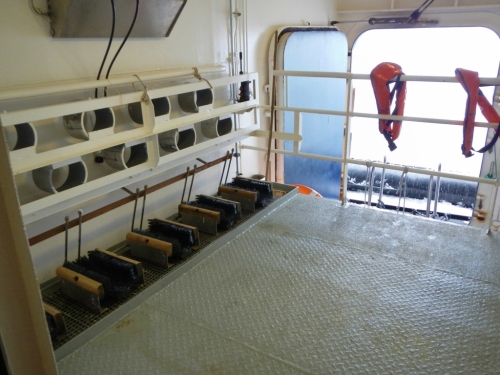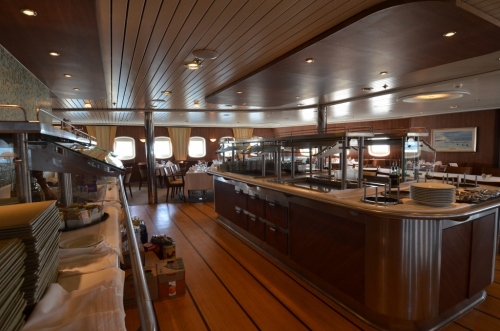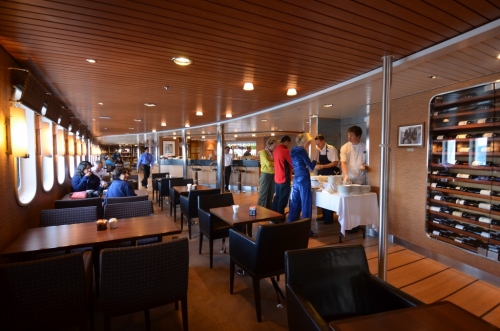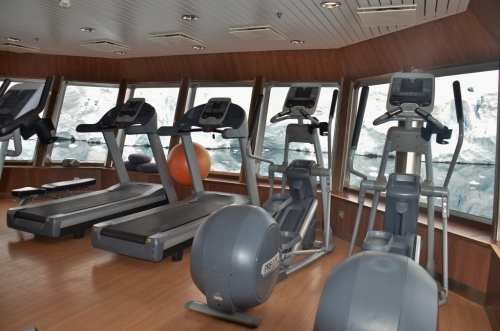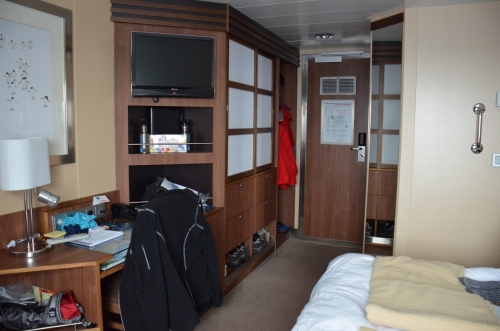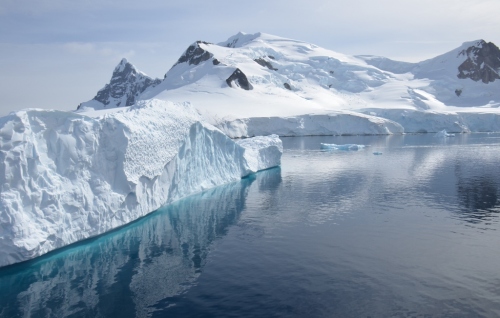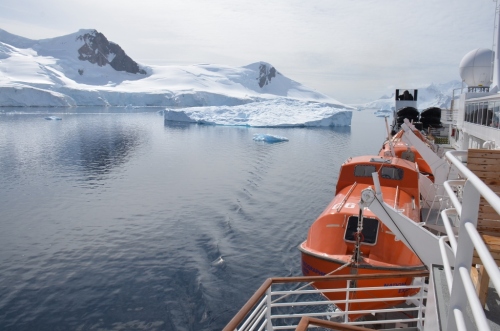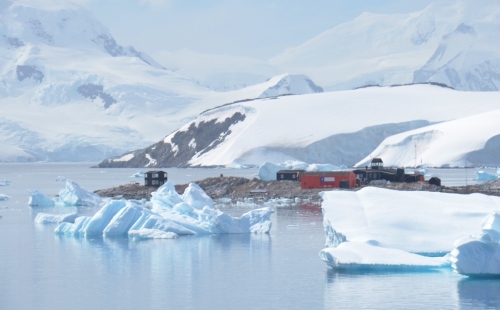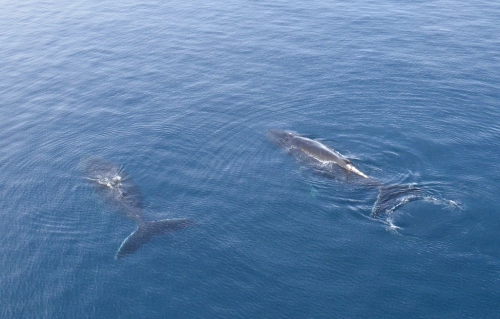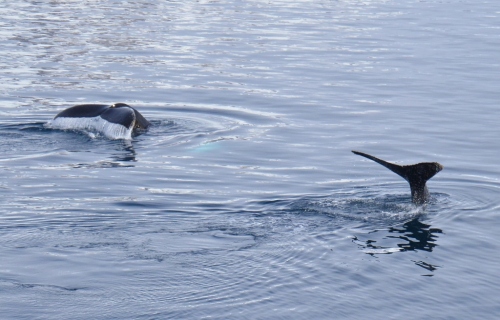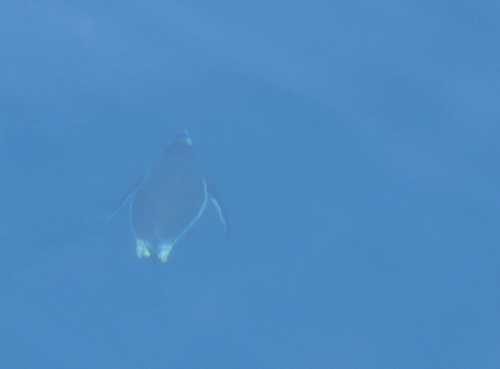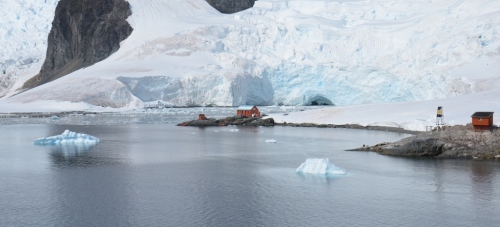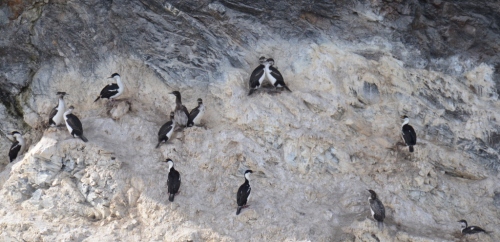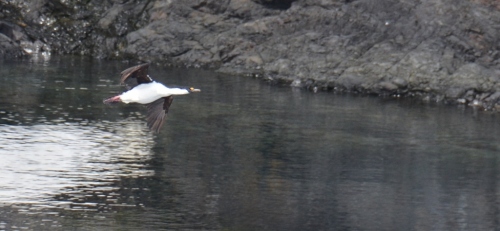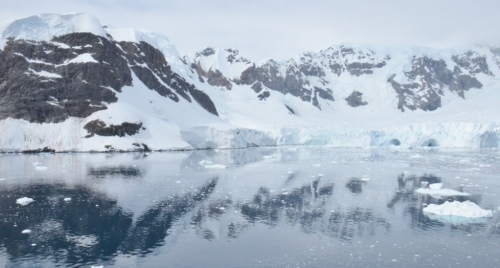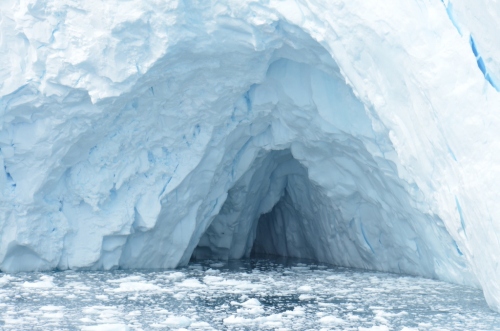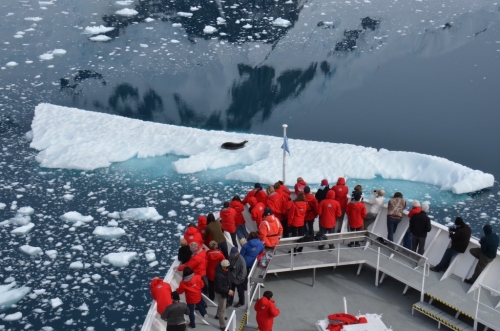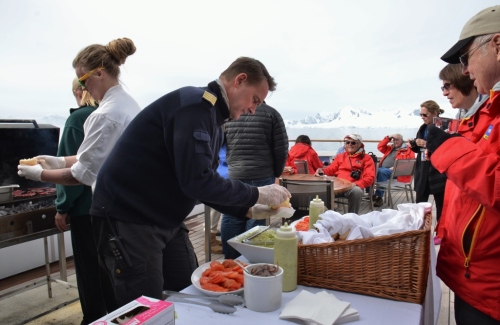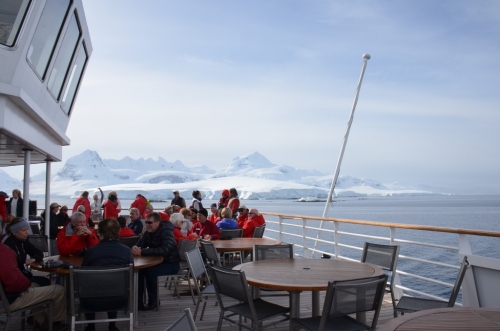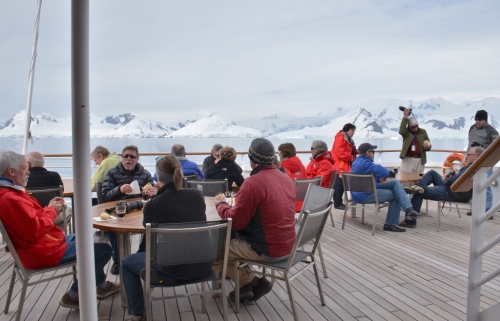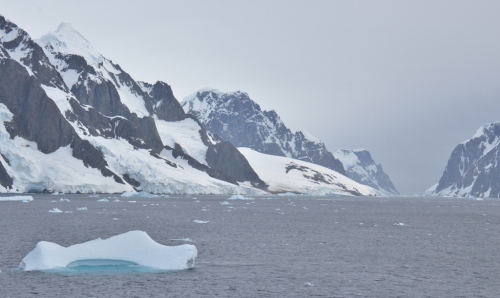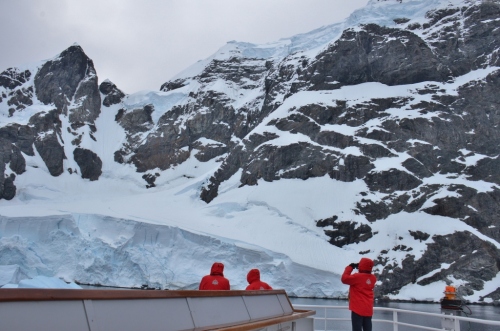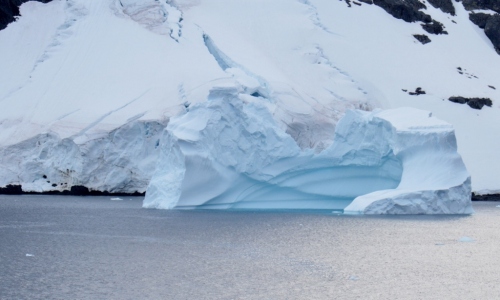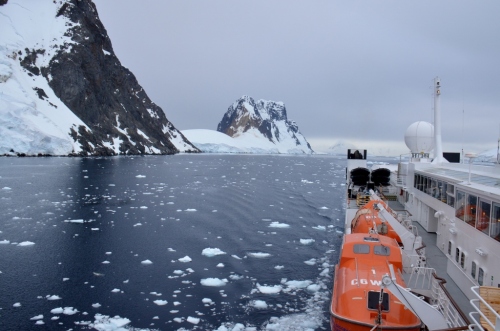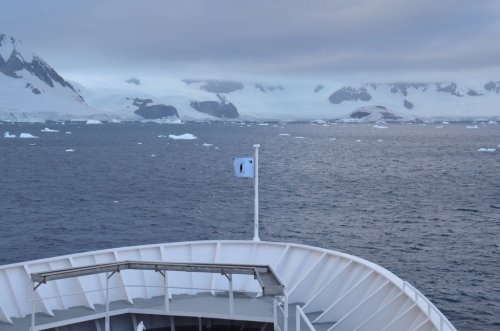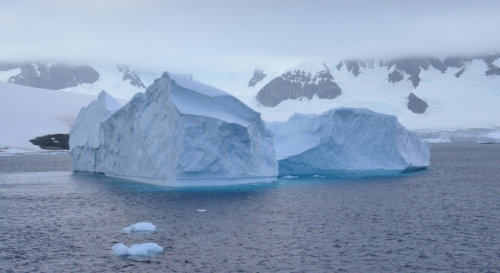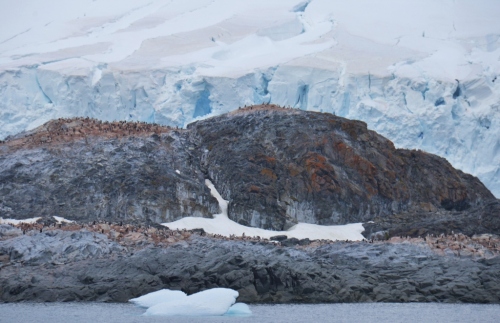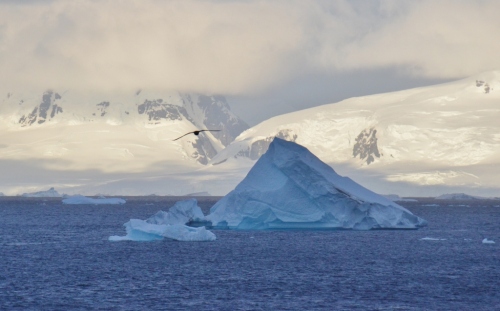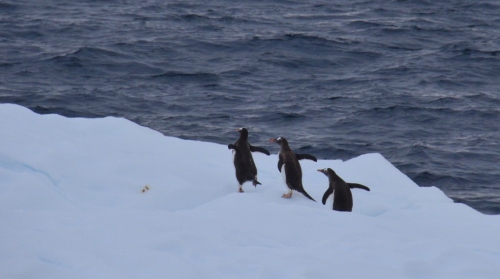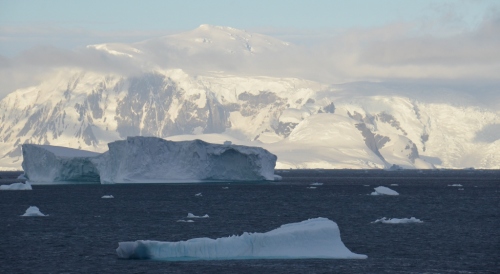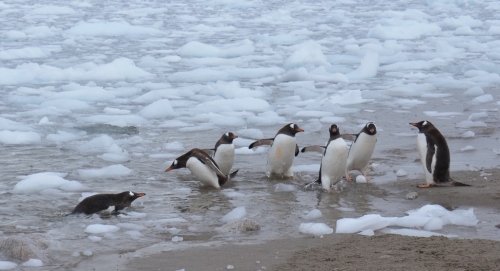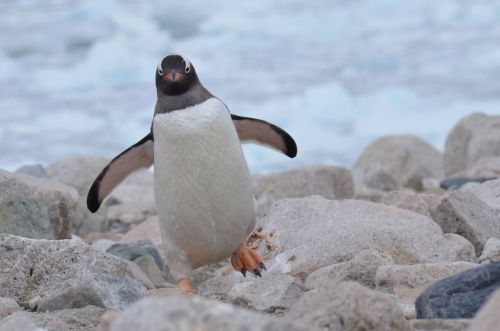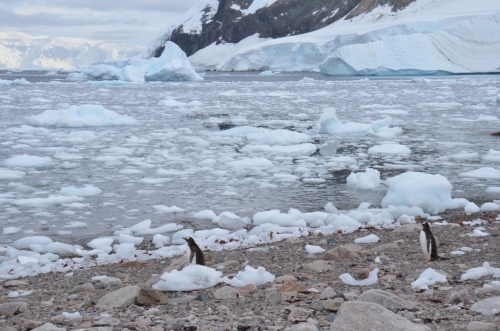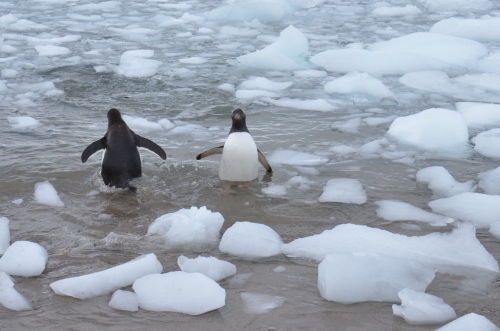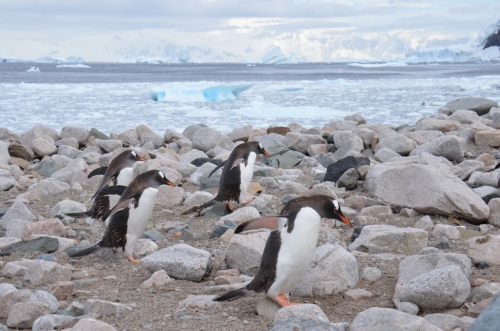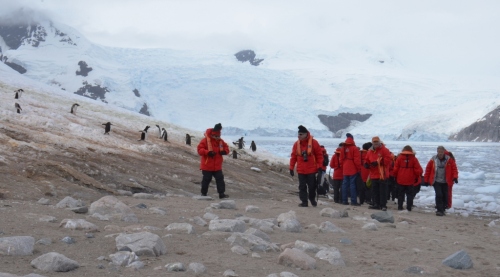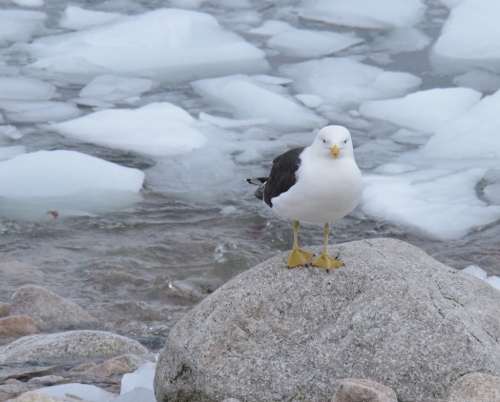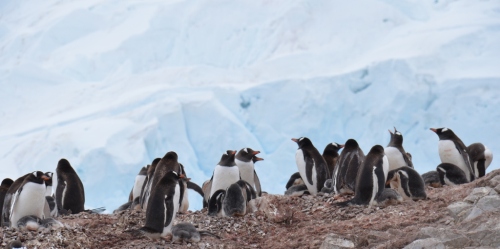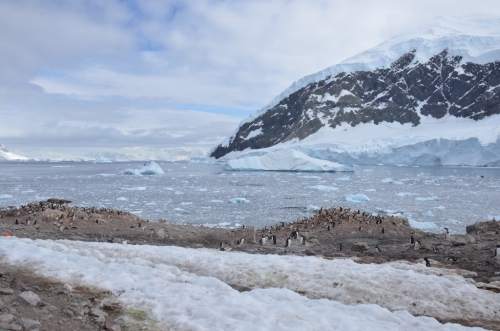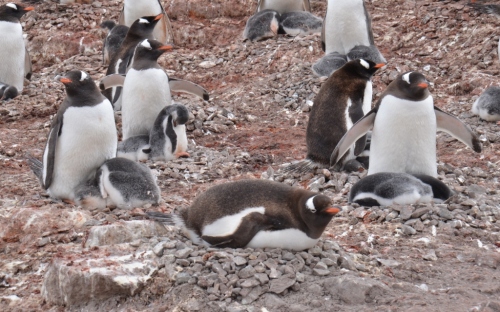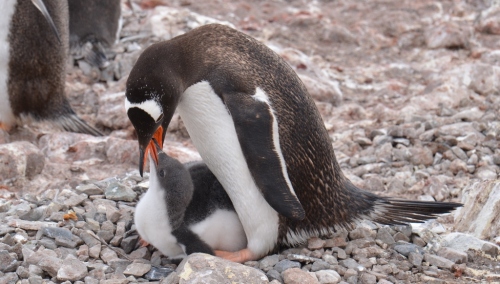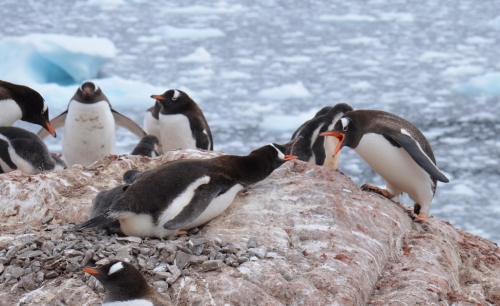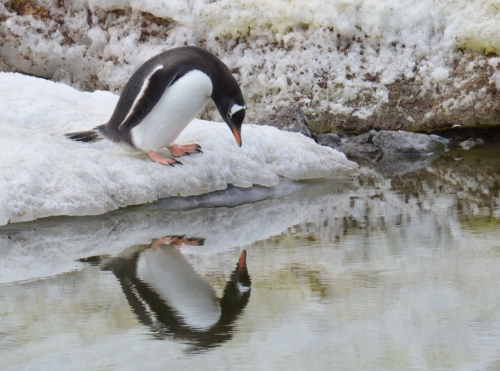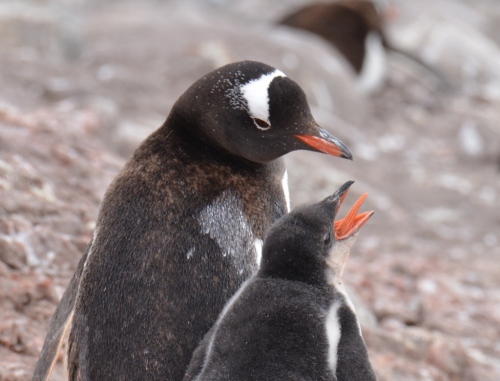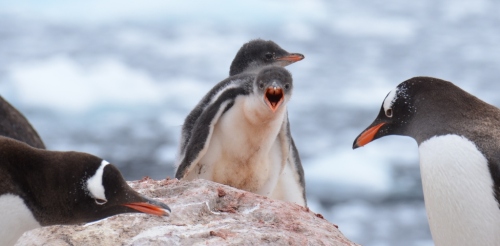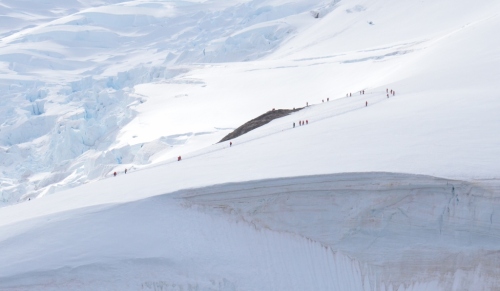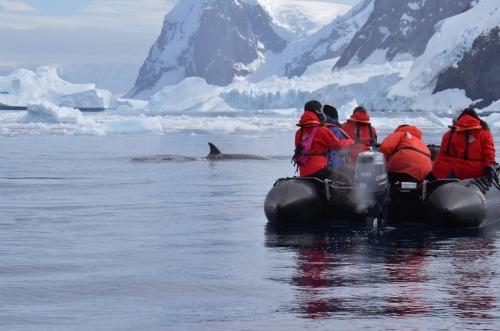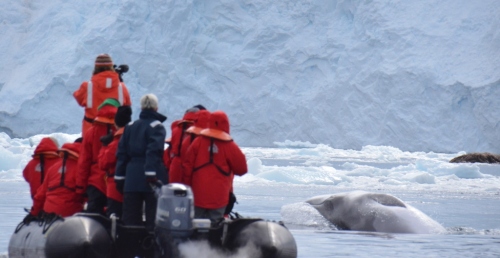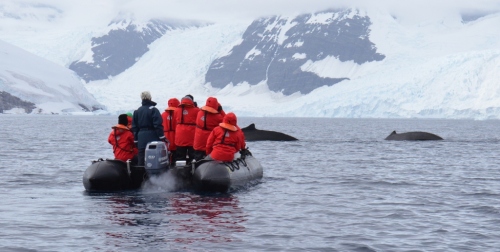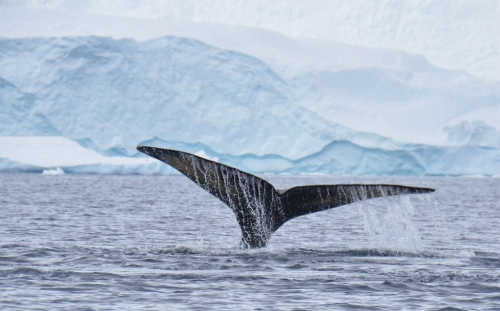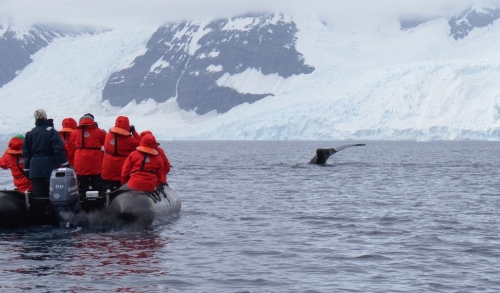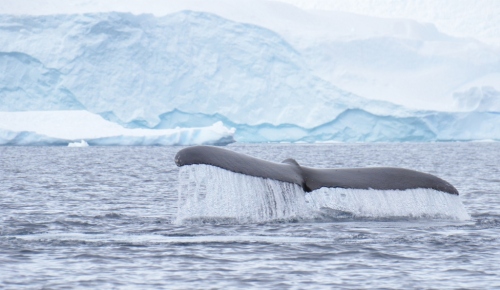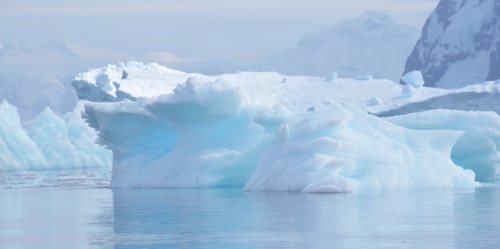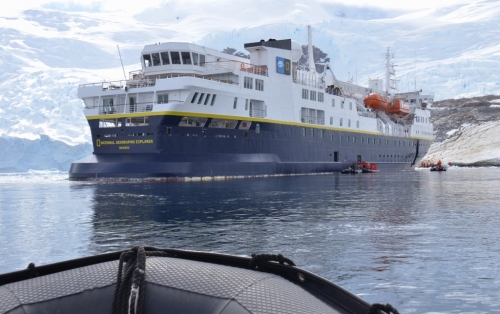After the great whale tagging, the Explorer cruised further south along the western side of the Antarctic Peninsula, where we encountered one of the largest and most beautiful icebergs of our entire trip, and I got one of my favorite photos:
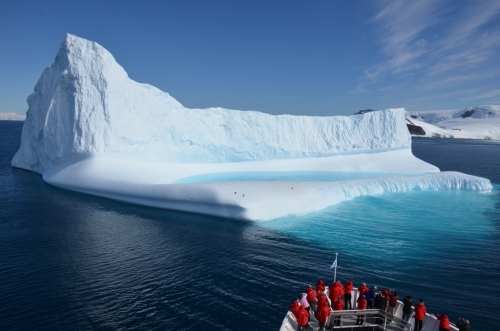
Those tiny black dots on the ice are not specks of dust on my lens, they are penguins, that’s how big this berg was! And this berg came with its own penguin swimming pool — the beautiful blue water inside the ice. The Explorer moved carefully around the berg, giving us a great look at the penguins (chinstraps and a Gentoo), as well a poolside perspective, where we could see one intrepid penguin making its way down for a swim.
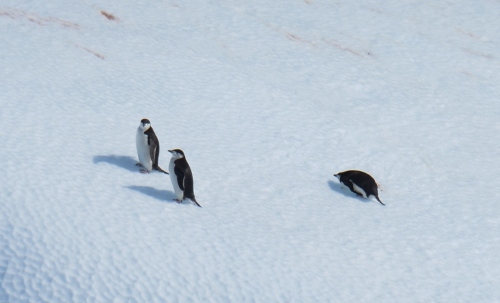
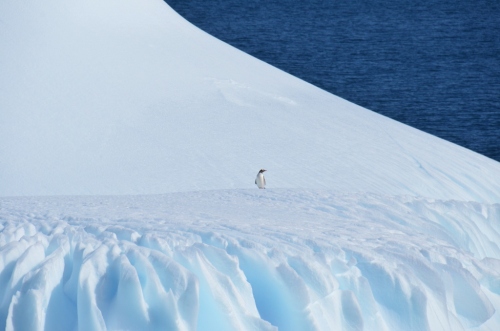


After our tour around Big Berg, we headed for Mikkelson Harbour on Trinity Island, off the western coast of the Antarctic Peninsula, the site of our second landing. The island is home to an abandoned Argentine hut and a Gentoo rookery. After the pristine beauty of Brown Bluff, it seemed a bit cramped, as well as incongruous, to get ashore and find penguins standing around an old building.

But a walk further away from the landing site on this very beautiful day gave us many good looks at the Gentoos — who were nesting, feeding, coming and going from the sea — and the overall setting of the Harbour was certainly stunning.

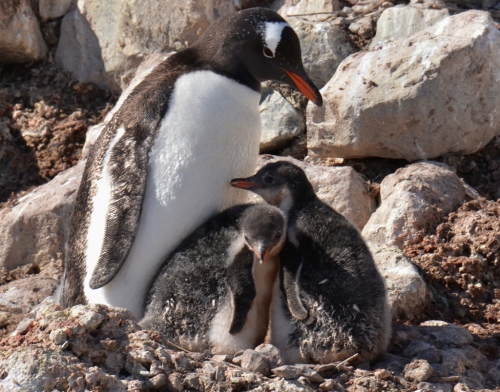
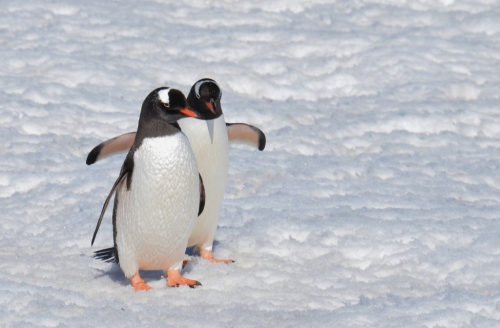
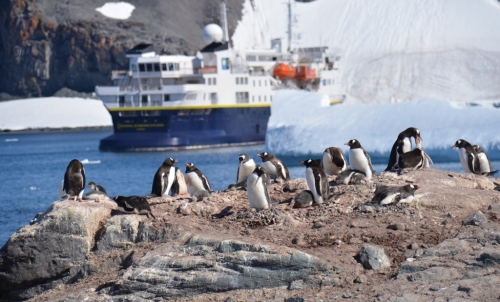
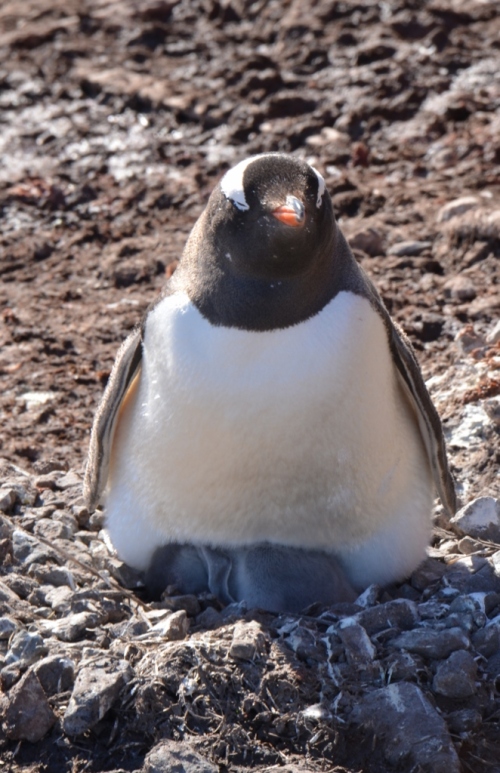
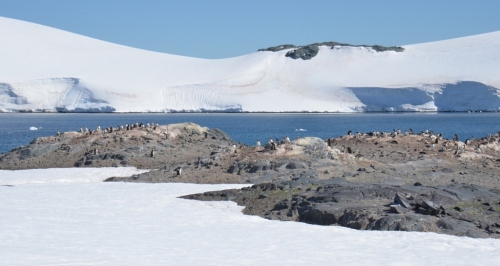
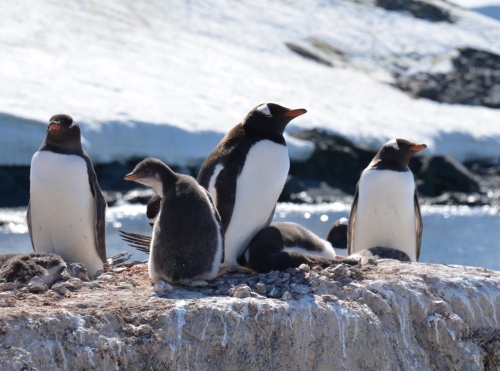
Bud had told us that we’d probably have a chance to go kayaking this afternoon, and from Trinity Island, we could see that the crew were in fact getting the ship’s two-person kayaks ready for launching.
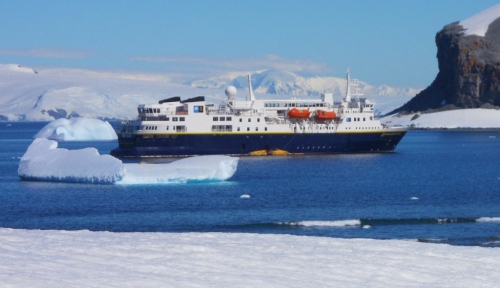
Those who were interested in kayaking had already been briefed on what to expect. MP and I have some limited kayaking experience, but MP decided to pass on this. One of our new expedition friends said she was a pretty experienced kayaker, so she and I paired up. I’ll candidly state that while I wasn’t very worried about flipping over in the kayak, since we’d been assured it was almost impossible to do this, I was still a tiny bit apprehensive about being in a kayak in frigid waters, not to mention in waters where a whale could upend us. But I was determined not to miss the opportunity to kayak in Antarctica, so I put my apprehension aside.
The kayaks were launched from a small platform that was set up between two zodiacs outside the zodiac boarding area. The platform itself was slightly submerged, with the kayak sitting in the water. It was no problem to step out onto the zodiac and then into the kayak. (These are zodiacs coming back in, but you get the idea.)
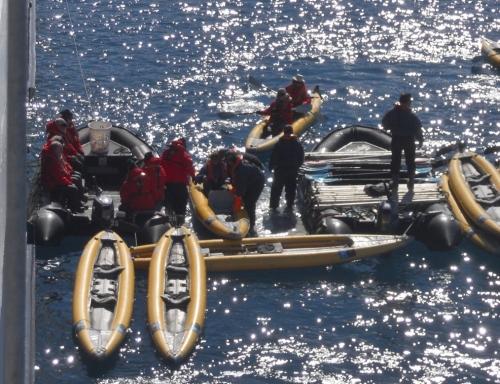
Given our friend’s kayaking experience, she sat in the rear so she could steer (the kayaks had foot pedals that operated a little rudder), and I was up front. Before we were pushed off from the zodiac boarding area, we were given instruction about steering, told where we could go and not go, and were specifically warned to stay away from the stern of the Explorer, where we could get chopped up by the ship’s propeller. Well, without belaboring this, let’s just say that my kayaking buddy had a little bit of dyslexia with the steering, and despite our paddling furiously to correct our course, we soon found ourselves headed just where we were told not to go — the stern of the ship. We pretty much ran right into it. Somehow, we managed not to become sliced and diced whale food, but I think the crew are still laughing at us (and I know that MP up on deck watched all this play out in horror). It’s a funny story now, but it was pretty scary at the time (and really embarrassing).
After we finally got clear of the ship, we paddled around, amazed that we were doing this in Antarctica, not to mention kayaking in parkas and Muck Boots. We had great views of the surrounding ice and of the Explorer from water level. Given our steering misadventures, though, we elected not to paddle out to the zodiac where hot chocolate was being served. But we still had fun!
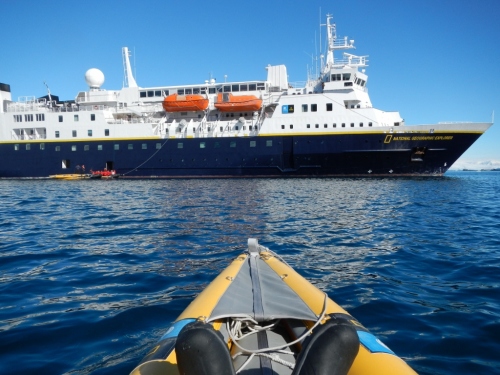
These are my actual feet. ^ And here are some folks enjoying a great view of a beautiful berg:
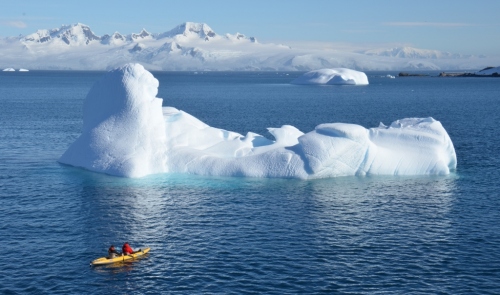
By the time we’d finished kayaking, it was about 5 PM on a really long and exciting day that had started at dawn with the killer whale wake-up call. I was, quite literally, exhausted. I showered, put on clean and dry clothes, and was really looking forward to a little bit of down time before the evening briefing and dinner. But no! Just as I had stretched out on the bed, Lucho, our Assistant Expedition Leader, announced over the PA system that the Polar Plunge was going to take place in about 15 minutes, and that anyone interested in participating should get down to the Mud Room in a bathing suit. Wow, the Polar Plunge, totally unexpected today! And yes, we were actually being offered the chance to jump off the side of the ship into the 29° F waters of Antarctica wearing only a bathing suit!! It doesn’t get much better than that! 🙂
When we booked this trip, I knew that the Polar Plunge was on the list of things we might be able to do, but that there were no guarantees. I also knew going in that I was absolutely going to take the Plunge if we had the chance, just as I was equally certain that MP, who thinks that water temps in the low 70s are too chilly for swimming, would never do it, and I was right.
So while MP headed off to find a good location on deck for watching the Plungers, I put exhaustion aside and quickly changed out of my clothes into my bathing suit (brought along JUST for this purpose), put on the big terry cloth robe supplied in the cabin, and my flip flops, and headed down to the Mud Room, where there was already a line of other crazy people like me folks ready to jump into the frigid water. With the access bays to the zodiac boarding area open, and the cold air blowing in, it was FREEZING in the Mud Room. As far as I was concerned, the line could not move fast enough.

Finally, I neared the front, and noticed that the ship’s wonderful doctor (Doctor Patty as we called her) was right out there in a zodiac next to the platform (in a parka, not a bathing suit), ready to provide emergency assistance in case the Plunge stopped anyone’s heart. Well, it was certainly comforting to see her out there! Members of the ship’s crew were also on the platform to pull the Plungers out of the water.

When it was my turn, I took off my robe and glasses, stepped onto the zodiac and out to the platform, and jumped right in. It felt as though I were descending for a long time, although I’m sure it was only seconds. Even before I surfaced, I was being pulled out by the crew. Yes, the water was (almost) freezing. Yes, it was exhilarating. And yes, I would do it again in an instant.
As I was drying off in the Mud Room, MP rushed in and took a picture of me. I have a great smile of joy on my face, like — can you believe that I just jumped into 29° water? (And no, I’m not going to post a picture of myself in a bathing suit on the internet, you’ll just have to trust me that my expression was joyful.)
At dinner, we encountered many folks who had not taken the Plunge, and thought it was very brave of me to have done so. I don’t think that at all. I just think it was amazingly good fun, one more unique experience on this trip that I will never forget!
After dinner, although I was really tired, I decided to stay up for sunset, since the sky was clear. According to our Daily Program, the sun would set at 9:35 PM. While that may not sound like very late in the evening, the day had been packed since dawn, and very few of my fellow travelers were on deck with me as we sailed further south, with the light from the setting sun casting a wonderful glow on the continent of Antarctica.
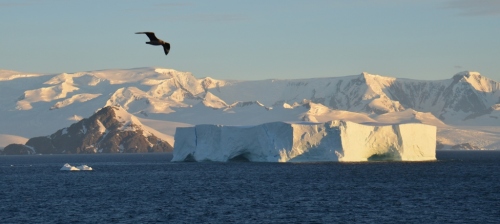


And finally . . .
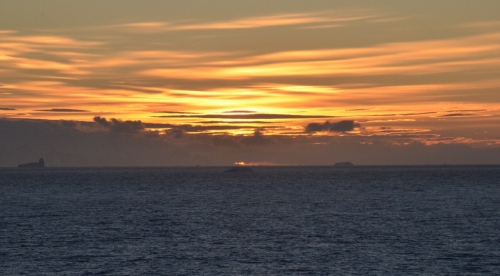
With the sun down, it was at last time to call it a day. But when I got down to our cabin, I saw this fantastic sight out the cabin window — another reminder that the beauty of Antarctica just did not stop:

(Polar Plunge, kayaking platform, and some Mikkelson Harbour photos by MP, all other photos by turtles06)

